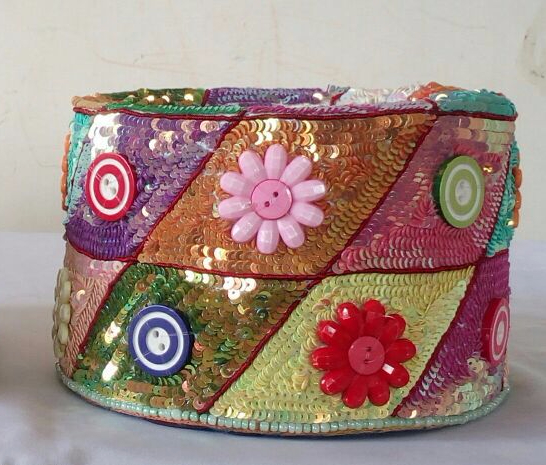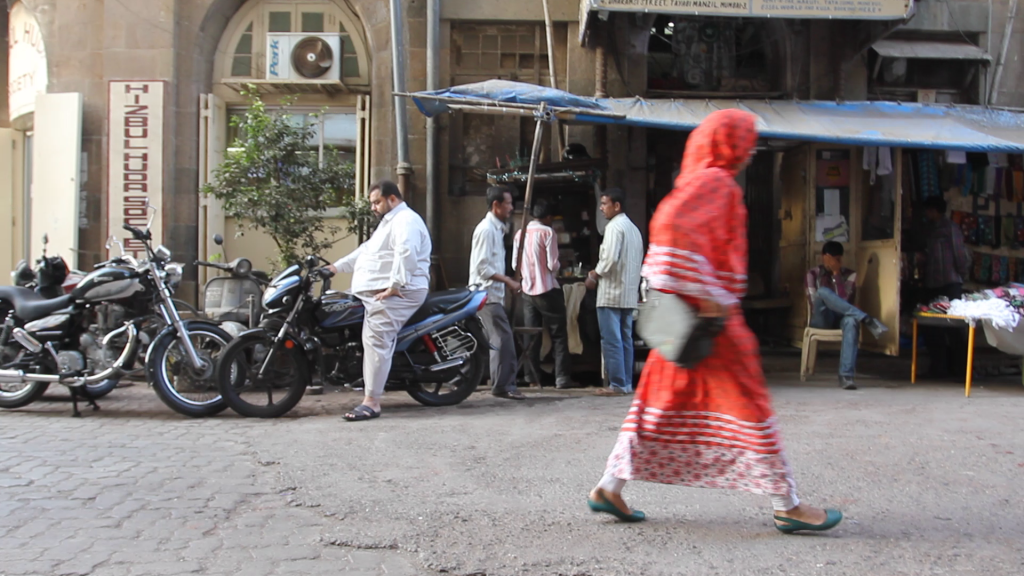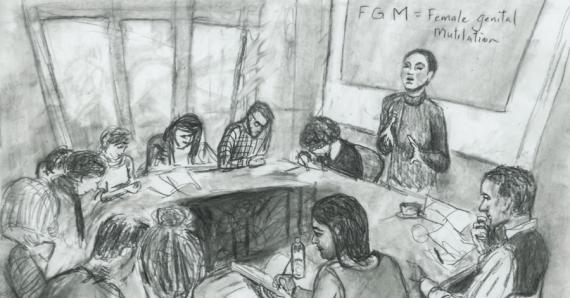Female circumcision is no different from other forms of violence against women

(Originally posted by BEYONDHIJABSG on 5 FEBRUARY, 2016. Republished here with permission.) Country: Singapore Community: Malay By: Filzah Sumartono So I was talking to my friend the other day and I brought up the issue of sunat perempuan or female genital mutilation/cutting (FGM/C). And my friend seemed pretty nonchalant about it. Yeah, well…it’s something that is done when the child is very young, all kids have to do it, right? – No, only Malay kids. – Yeah, okay, so what’s the problem? I think there are bigger problems out there. Well, the problem to me is that sunat perempuan is something that does not need to be done. There’s no medical basis for it, it’s not something that is taught in medical school, there are no health benefits from it. By cutting the child, you’re taking away something from the child that is not yours to take in the first place. And all this because of some vague notion of “culture” or to “prevent promiscuity” or a misunderstanding of “religion” or a misunderstanding of how the female body works. I recently found out that someone I know sent her infant daughter to be cut. My heart broke when I heard the news. It doesn’t matter if the procedure that is done in Singapore is “just a small cut” or “won’t hurt very much”. The very idea that something is wrong with female reproductive organs or that it is not good enough the way it is and that it has to be cut reflects a deep-rooted idea that girls and women have to be controlled and subjected to many restrictions and etc. Sunat perempuan is no different from other forms of violence against women. It is just one of the many ways society tries to control the female body, sexuality and being. In our Malay community, we begin the process at infancy. To not see it as a problem is to deny that this is part of a bigger picture of how society condones violence against women and removes women’s rights to live on their own terms.
‘I am relieved more parents are saying no to female circumcision’

(Originally posted by BEYONDHIJABSG on 5 FEBRUARY, 2016. Republished here with permission.) Country: Singapore Community: Malay By: Zuby Eusofe I was six years old when I was forced to undergo female genital mutilation (FGM) aka sunat perempuan. I was in a deep sleep and all of a sudden, I felt a sharp prick on my clitoris. I was shocked, clueless and traumatised. I didn’t know what was happening to me. When I opened my eyes, I saw my late mum, my aunt and an old lady, who seemed to be in her sixties, gathered around me. I was still wearing my baju kurung (Malay traditional clothes) but my underwear was gone. After putting me through that ordeal, they asked me to get up and try to walk in my clothes but without my underwear. The thought of going through this so-called “religious ritual” traumatized me for quite awhile. I remember having nightmares about it too. I am relieved that more and more parents are saying no to FGM. Now that I have a son, I will educate him not to practice FGM when he has a daughter with his future family. This practice has to end. Even though there are still quite a handful of Muslim parents who practice the ritual just to please the elders, I think they should also prioritise their child’s well-being. A recent study by Oxford University [1], suggests that babies feel pain just like adults. The researchers found that 18 of the 20 brain regions active in adults when they experienced pain were also active in babies. MRI scans also showed that babies’ brains had the same response to a weak ‘poke’ (of force 128mN) as adults did to a stimulus that was four times as strong (512mN) which actually suggests that babies have a much lower pain threshold. Therefore, I believe that as parents we should not practise such traumatizing birth rituals. We should strive to abolish the practice of FGM for the sake of our next generation of daughters. [1] http://www.ox.ac.uk/news/2015-04-21-babies-feel-pain-adults
FGM/C from an artist’s perspective: Art for cultural change

I will not let my younger daughter be cut, says a Bohra father

By: Hozefa Anik Age: 40 Country: India The first time I heard about khatna was some 15-16 years ago, when I was working in Doha, Qatar. I was told that it is a practice prevalent in parts of Egypt, mainly in the villages located in the Nile river basin. The soil of the basin was supposed to be very fertile and had a certain effect on women’s genes, apparently making their clitoris grow ten times bigger than its normal size. Because of this, the women would remain in a constant state of physical arousal – any bodily movement would cause friction and arouse them. To control that, they started cutting the clitoris, which eventually turned into a tradition. I never thought much about this till, a few years ago, I read about a lady opposing khatna in Australia and discovered that this was being practiced among the Bohras too. And I was against the idea of khatna from the very first time I heard about it. My elder daughter was cut when I was out of India and I was not even informed or consulted. It is a misfortune that on the one hand, we say that we are advanced and we use the latest gadgets and technology, but on the other hand, we still adhere to age-old rituals and traditions. We are fed such things from childhood, so for us it becomes a way of life and we do not even bother to understand the rights and wrongs. I will give you an example. When I was in Santo Domingo, we had a live-in maid in our house. She stayed with us during the week and went to her own house on Sundays. One day, I saw her cutting her nails at night and I objected to it, telling her not to do it at night and to try to do it only on Fridays. This was based on the superstition fed to me from childhood that we have to cut nails only on Fridays and never at night. When the maid asked me the reason for this, I was unable to give her a satisfying explanation as I myself am unaware of the logic. I don’t follow it anymore. I cut my nails whenever I want but the problem is I still feel guilty if I cut them at night. This applies not just to Bohras; this is global. Every religion, community, society has some sort of superstitions. My elder daughter has been cut, but I am not going to do it to my younger daughter. My wife is on board with me about this – we will not let this happen to her.
One Woman’s Reactions to Bakersfield’s Resolution against Khatna (FGC)

By: Anonymous Country: United States Age: In her 30s When the public resolution on khatna (female circumcision) from the Bakersfield Jamaat (community) was released shortly after the Sydney case, an old weight was lifted from me. There. They’ve finally said it. Do not do this. As I followed the events leading to the trial and prosecution in Sydney, I could only hope an official mandate against khatna would make its way to the U.S. Jamaats and to Bakersfield, where my own khatna was performed. It did. Thanks to the brave whistleblowers in Sydney and the upstanding efforts of the Sahiyo women, we’ve seen the snowball of these resolutions from Dawoodi Bohra communities all over the world. The victory however, was short-lived for me as I’m sure it was for many others working to educate people about this practice. To no one’s surprise, statements from the central dawaat (clergy), are suggestive of these resolutions being just a way to protect our communities legally—to prevent another Sydney, to prevent another Amil from going to jail, and lessening the impact of these letters. If you read the resolutions carefully, the focus was never about taking ownership, but to use the state or country of residence as the scapegoat for denouncing the practice. Even worse, our sisters in India and other countries where there are no such laws can still be subject to this practice. We need a resolution not from the Jamaats, but from the head of the community. We do not do this. — Following the discovery of my own cutting many years ago, I remember attending a women’s function at home and anonymously submitting a question as to why we practiced khatna. The question was deferred by the M.C. to a doctor in the Jamaat who stood with authority and explained how it was essentially a matter of “cleanliness”—nothing more and nothing less. There was no mention of sex or sexuality at all. I looked around at all of the women nodding their heads in agreement, some smiling even, so accepting. I was infuriated by her response, knowing otherwise, and wanted to scream at the top of my lungs in protest. I didn’t because I knew it was futile. How could I go up against an official voice and a women’s doctor? How could I blame the participants for their naiveté, many of whom were her trusting patients? For years I have been deeply troubled by this dichotomy. This was the one and only time that I had ever heard anyone in my community even address this practice aloud. To my knowledge, it was never brought up in a public forum like this again, although by this time my attendance at such functions began to dwindle. Reflecting back on this particular event and similar others growing up in this community, I am at times in disbelief that we are having this conversation. More, that we are forcing this conversation, and people are listening now. I often felt hopeless that there was little official action that could or would be taken on such an underground practice because so few people were willing to speak up or speak out. Many of my family and friends were unwilling to even talk with me about it in private. — Am I confident the Dawoodi Bohras of Bakersfield and the surrounding cities who come to Bakersfield for khatna will abide by the resolution? Unfortunately, no. There are some people who will continue to drive the practice even further underground. The small victory here is that these resolutions by local Jamaats, have created the necessary dialogue for community members to be aware this practice is even taking place, and to give families the option to opt-out in the name of the law. When my khatna was performed, there was no state law against female genital mutilation and no “opt-out” from the Jamaat. My family had no understanding and no choice–the alternative being unrelenting pressure to perform the cutting or social ostracism. To the families with young girls in Bakersfield and throughout the U.S. – please listen. This is your chance to end this practice once and for all. A voiceless seven-year old will grow up, and ask the same questions I am asking now. Why did this happen to me? Yes the legal consequences are certainly not worth the risk, but more importantly, the physical and psychological consequences that can result from this trauma are not worth the risk. Stand up, and stand with us.
I’m A Survivor of Female Genital Cutting and I’m Speaking Out – As Others Must Too

(This story originally appeared on the Guardian.com on February 8, 2016 and reappeared on the U.S. State Department’s official blog on June 1, 2016. It is republished here with permission). By Maryum Saifee I was sitting in an anthropology seminar at the University of Texas cramming for a final, only half-listening to a fellow classmate describe her research project. Female genital mutilation is the partial or total cutting of the external female genitalia for non-medical reasons,” she mechanically described. “The procedure typically take places when the girl is seven years old. The process is usually carried out by an older female relative. And once the ritual takes place, it is almost never discussed.” As she spoke, goosebumps began to form and I sat paralysed in my seat. Memories I had suppressed since childhood came flooding to the foreground. I was seven years old. My parents had sent my brother and me to visit family in India for two months. On a humid mid-summer afternoon, my dad’s sister decided to throw a party for my brother, celebrating his completion of the Qur’an. At the party, she pulled me aside, wielding a jumbo-sized Toblerone. She said that if I stayed on my best behaviour, I wouldn’t have to share it with anyone, including my brother. I was overjoyed. My aunt was a doctor. So when she led me downstairs to her clinic and instructed me to lie flat on my back on her operating table, I didn’t think to question her authority. With no anaesthetic and very little warning, she performed the ritualised cut. After it was over, we headed back to the party in silence. I remember sitting in a corner by myself, unable to open the chocolate bar bribe and feeling sick to my stomach. I blocked out the memory, until the day when I discovered that what happened to me had an acronym that could be found in the glossary of a medical anthropology textbook. When I confronted my parents, they were stunned. My aunt had carried out the ritual without their consent. My father felt a unique betrayal. This was the same little sister he encouraged to pursue medicine in the first place. He had no idea that female genital mutilation or cutting (FGM/C) was even practised within the Dawoodi Bohra community, a Shia subsect from India’s coastal state of Gujarat. As I learned more about the practice, I discovered that more often than not, men are oblivious and may not even know it is happening — or has happened — to their daughters, sisters, and mothers. I learned that FGM/C dates back thousands of years, predating Islam and Christianity. It is a cultural practice that is neither rooted in religion nor bound by geography nor restricted to a socioeconomic class. Like other forms of gender-based violence, FGM/C is a manifestation of power and means of controlling the sexuality of women and girls. In recent years, many countries have passed laws to criminalise the practice of FGM/C. Yet, it is an extraordinarily difficult crime to prosecute. Laws alone are not enough. For there to be a sustainable end to this practice, there has to be a radical culture change from the ground up, that promotes zero tolerance to any and all forms of excision. As I have engaged with friends and family members who support the ritual, some will argue that it is not technically mutilation. They even go as far as asserting that “mutilation is what is done in Africa”, as though our community practises a more civilised, humane version. According to the World Health Organisation, all versions of FGM/C cause harm, both physical and psychological, which renders the “good FGC v bad FGM” debate meaningless. One of the greatest challenges in raising awareness on FGM/C is that many survivors are shamed into silence. If they voice dissent, their communities might socially ostracise them. Within the last few years I have noticed a shift. More and more FGM/C survivors are courageously speaking out. Male relatives who may have never even been aware of the practice are also taking a stand. From a recent Change.org campaign launched by over a dozen Dawoodi Bohra survivors in India, to Safe Hands for Girls “a youth-powered movement in Gambia”, communities are movement-building and speaking out against FGM/C in greater numbers. I encourage you to break the culture of silence around FGM/C by sharing this video containing testimonials of fellow survivors and advocates, and joining the global conversation to #endFGM. About the Author: Maryum Saifee serves as a Policy Advisor in the Secretary’s Office of Religion and Global Affairs at the U.S. Department of State. Cover Image: Sketch from an AJ+ video on breaking the culture of silence around female genital cutting featuring Maryum Saifee’s story.[Isabeau Doucet/AJ Plus]
A Short Film on FGCThe Good Girl- Written and Directed by Insia Dariwala

Arva was a young girl who just wanted to go to the park and enjoy a beautiful, bright morning with her aunt. Instead, she was taken to a dark room, her legs spread apart and her voice smothered, while a sharp razor cut off the ‘sinful’ part between her legs. Arva was only seven. Today, 32 year old Arva is an esteemed gynaecologist, helping other women respect their bodies, despite the fact that she struggles with accepting her own. For the past 25 years, Arva has desperately tried to heal herself from the scars given to her by the women she trusted.”But is it so easy to unknot yourself from the people and traditions that are deemed to be the essence of your identity? Watch this space to learn more about ‘The Good Girl’ written and directed by Sahiyo Co-founder Insia Dariwala. A gut-wrenching short film that peels the layers surrounding the barbaric practice of Female Genital Circumcision, when Arva comes face to face with her cutter. The woman she used to lovingly call, Faiji. Coming soon! If you have questions about the ‘The Good Girl”, please e-mail info@sahiyo.com.
